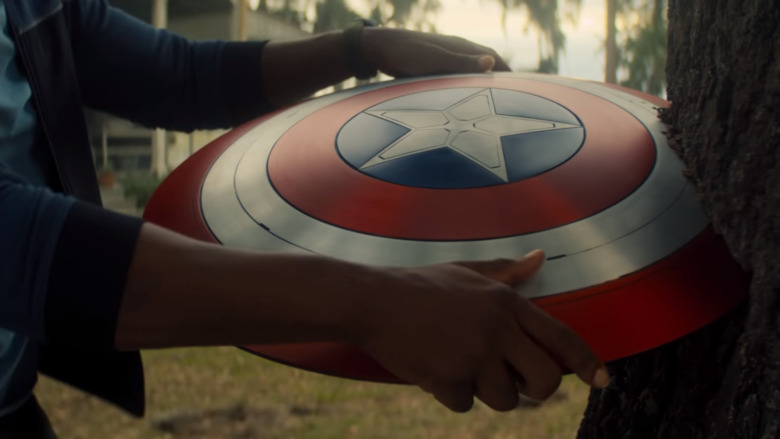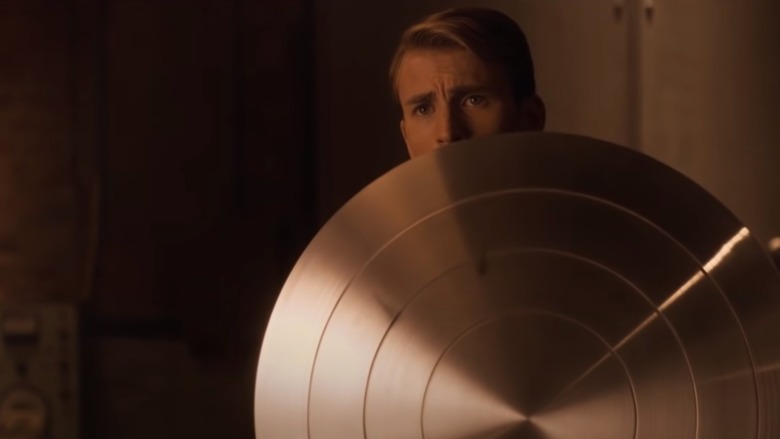How Does Captain America's Shield Work In The MCU?
In the Marvel Cinematic Universe, when Captain America throws his mighty shield, you can generally count on a couple of things going down. First, common courtesy will dictate that all those that chose to oppose his shield must yield. Secondly, as Spider-Man so rightly observed, the laws of physics aren't going to be obeyed at all.
It's all thanks to vibranium, the fictional metal that flew into Earth's atmosphere on a meteorite and crashed into the region of Africa that would later become Wakanda. This wonder substance was determined to possess remarkable properties — its presence transformed the Wakandan landscape into a verdant paradise, populated by mutated creatures and plants. More importantly, its mind-boggling physical attributes helped to turn Wakanda into a technological utopia, offering citizens of the nation both a reason and a means by which to hide from the rest of the world.
In the 1940s, crackerjack American industrialist Howard Stark managed to get his hands on a small quantity of vibranium through unexplained means and, believing that he'd found the only sample of the stuff in existence, did what any right-thinking super scientist would do and used it to make the last word in disc sleds: Captain America's shield. But how, exactly, does it work?
Captain America's shield resists bullets, explanation
Cap's shield sets a standard for Newtonian reactions that's been disappointing kids who chuck trash can lids at each other for generations. Because it's made from vibranium, it has the capacity to either completely absorb or completely deflect kinetic energy, depending on what kind of action the script calls for. If Captain America needs to reflect bullets back at his enemies, that's exactly what the shield will do, as seen in Captain America: The Winter Soldier's highway fight scene. If it needs to stop bullets dead in their tracks, like in Captain America: The First Avenger's introduction to the star-spangled accoutrement, it can do that, too.
The shield's capacity to play Calvinball with physics also explains its most cinematic feature — the way that it goes pinballing from one enemy to another when Cap throws it at someone. Vibranium's ability to reflect kinetic energy (unless it absorbs it) means that the shield doesn't lose momentum when it strikes an object (unless it does). Thanks to Cap's super soldier serum-enhanced reflexes and coordination, he's able to instinctively angle his throws so that his shield will hit multiple targets before returning to his side.
All of this falls apart the second that the shield stops operating conveniently — if it decided, for example, to reflect energy instead of absorbing it on one of those occasions when Cap jumps out of a window and cushions his fall with the metallic stars and stripes, it would turn our hero into the world's most patriotic superball. Then again, if molecular density worked the way they say that it does in the MCU, Pym particles would turn Ant-Man's skin into marshmallow paste any time he got big. It's superheroes, man. Just go with it.

